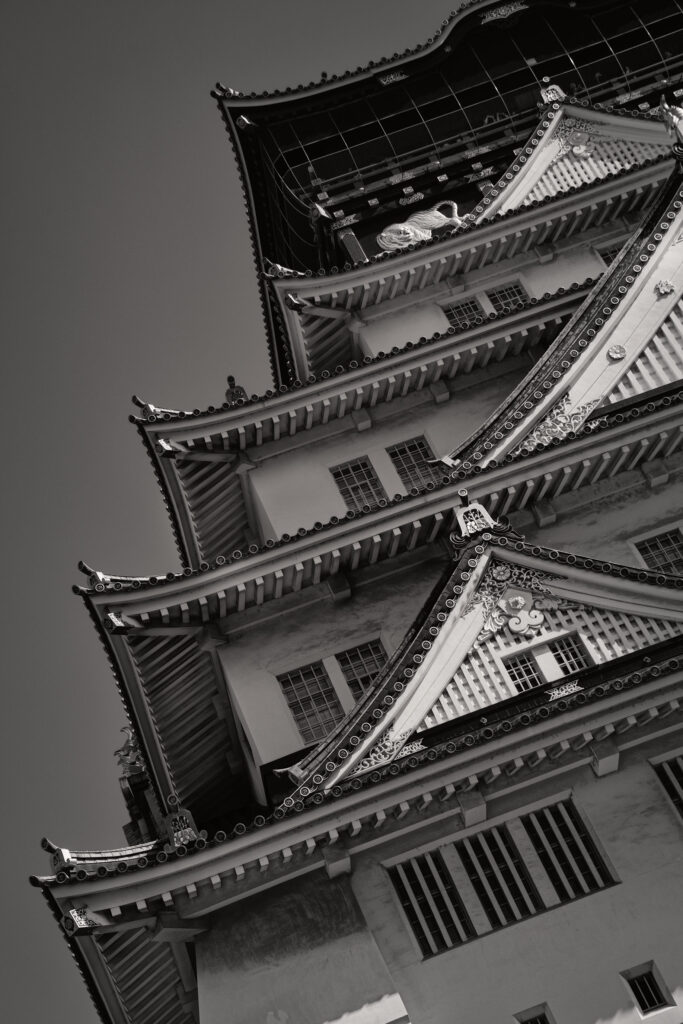I think that “subversive metaphoto” is a mouthful, but I kind of like the phrase. Ponderous? Sure. Pretentious? Double sure.
But here’s the thing. I spend much time thinking on what photographs are about. Not photographs in general, but specific and individual photographs.
What something is about is a different question from what something means. Meaning can be profound, whereas subject matter, “aboutism”, is merely subject matter. Let’s leave meaning out of it for the time being.
So how can you subvert subject matter? Is the result subversive? And is the subversive photograph by definition a “metaphoto”? In other words, a photo about photography, rather than about the subject matter in the photo.

Which brings me in a roundabout way to my photo of Osaka Castle shown above.
My photo shows part of the roof-line of the modern reconstruction of the pagoda-like keep (or center) of the vast, double-moat-surrounded castle that was for centuries the locus of military and civil power in the fertile alluvial river delta that became modern Osaka, Japan.
As a background for Instragrammers, Osaka Castle works. Alternatively, you can make a postcard image of Osaka Castle, possibly at sunset. But if neither Instagram nor postcards interest you, then I think one might be stuck. A compositionally interesting image is definitely a “horse of a different color”.
On site, out of visual boredom if nothing else, I choose to tilt my camera diagonally to capture the repetition of the pattern in the decorative roofs.
Later, reviewing my files, I wondered what this had achieved. What was the photo about? Clearly, while this may not be my most iconic image (note to Harold: certainly it is not your most iconic image), it is different in its angle, rakish but controlled, than the angular viewpoint in most photographs.
And that may be the point, what my photo is about. This is a photograph about photography.
It illustrates that photographers tend to look at their subjects far too head-on. They are scared to shift the camera angle, and scared to play with turning photos sideways in post-production. They shouldn’t be. Off-beat angles of view are often a great possibility, either in capture or in post. As an example, check out my Mountains on the Beach, which was turned sideways from the original capture.
When capturing a photo, look up, look down, look around, and in the words of Composition & Photography, “scootch” (see page 61) [meaning move around and try all kinds of camera positions]. In post, experiment with viewing your images differently: sideways, upside down, or even at a weird angle.